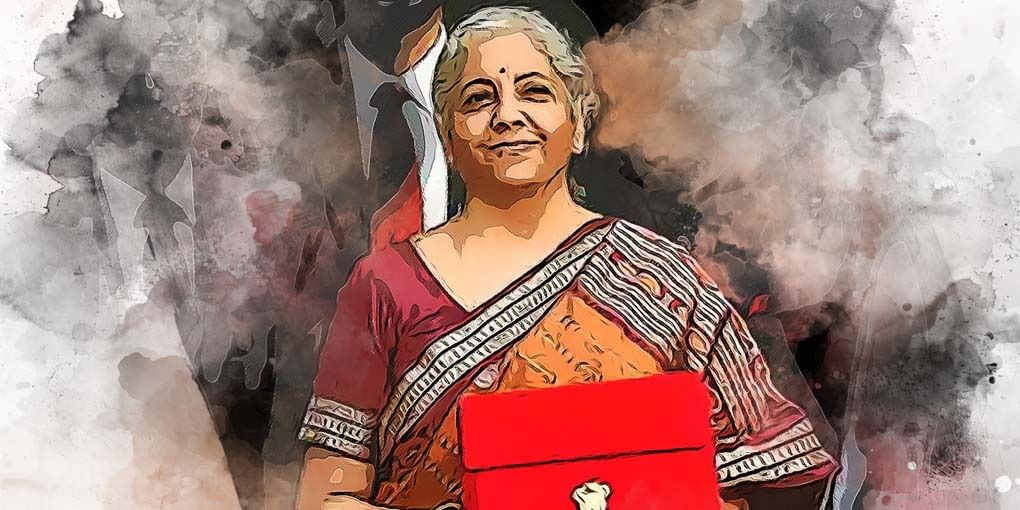Analysing the Union Budget 2022
The gross/net market borrowings are pegged at Rs 15 trillion /Rs 11.2 trillion (5.8/4.3% of GDP) for FY23, respectively
- Siddhartha Khemka
- Last Updated : February 7, 2022, 17:03 IST

The Union Budget 2022 has been announced amid a positive backdrop of a sharp economic recovery from the pandemic lows as well as a buoyant capital market. Although the Economic Survey forecasted 9.2% real GDP growth in FY22, followed by 8-8.5% growth in FY23, the markets were anticipating that the government would announce measures to support weak consumption.
Instead, the government continued on its course to improve the quality of its expenditure by focusing on investment growth. kept revenue expenditure growth at minimal, and propelled capital expenditure (capex) strongly for the second consecutive year. The government’s capital spending has more than doubled to Rs 7.5trillion in FY23BE, from Rs 3.4 trillion in FY20, thus indicating, improved quality of spending.
However, the higher-than-expected fiscal deficit, and thus, borrowings, disappointed the bond market and pushed the benchmark bond yield to over 6.8%. The fiscal deficit is revised upwards to 6.9% of GDP in FY22RE (at Rs 15.9 trillion visà-vis Rs 15.1 trillion in FY22BE) and pegged at 6.4% of GDP for FY23BE (at Rs 16.6 trillion).
The gross/net market borrowings are pegged at Rs 15 trillion /Rs 11.2 trillion (5.8/4.3% of GDP) for FY23, respectively.
Growth revival remained the principal theme of the budget. With this objective in mind, the government has largely continued with its focus of:
a) driving capital expenditure (capex) by enhancing gross budgetary supports for roadways, railways and defense sectors, and
b) propelling the manufacturing sector through PLI schemes, while transitioning the economy with an emphasis on urban planning, logistics, EV’s, solar module manufacturing, river linking, water connections, etc.
The FM has also focused on using PM Gati Shakti that was announced in Oct’21 to dismantle silos within the government for seamless building of infrastructure projects and improving the ease of doing business. Resisting the temptation of populist giveaways ahead of the five state elections in Feb-Mar’22, the government has largely remained on track with a focus on long-term structural growth drivers.
Overall from an equity market perspective, we believe the budget, on balance, has no unpleasant surprises while there remains some room for further capex/spending push as the government is likely to overshoot its revenue targets.
While there could be some disappointments on the absence of measures to improve consumption, economic recovery in FY23 coupled with vaccination progress would continue to drive demand recovery ahead. Crude prices around $90/bbl will present a challenge for inflation ahead and act as a risk for fiscal maths.
Given the continuity of policy focus and pronouncements, we believe markets will discount the budget and shift focus to: a) rising interest rate regime globally and consequent higher bond yields and b) corporate earnings growth that has remained resilient so far in the ongoing 3QFY22 earnings season.
We estimate 37%/17%/14% EPS growth for FY22E/FY23E/FY24E. The forthcoming RBI policy meet on 9th Feb’22 assume greater significance now with respect to the future of liquidity and interest rates. Valuations are slightly rich with Nifty trading at 20x FY23E EPS and thus the corporate earnings delivery becomes highly crucial, more so in a rising rate regime. We prefer BFSI, IT, Consumer, Telecom, Metals and Cement from portfolio perspective.
L&T (TP: 2,165):
L&T has rightly prioritized its Balance Sheet strength and is poised for a strong earnings growth momentum. It has some more asset monetization opportunities to capitalize on, including the sale of Nabha Power, a stake sale in L&T IDPL, and monetization of the Hyderabad Metro. The company’s order book grew 3% YoY to INR3.4t, with the order book/revenue ratio at 3.3x.
The management also indicated that the bid pipeline remains strong, with the overall pipeline at Rs 3.9 trillion (+48% YoY) for 4QFY22. We estimate an FY21-24E EPS CAGR of 25%, led by 15% CAGR in the core E&C business and reducing losses from the Hyderabad Metro. L&T remains the best play on a capex cycle in India.
Bharat Electronics (TP: 270):
BEL is looking to replicate its strong capabilities in manufacturing and R&D in the Defense space in newer segments over the next few years. It is one of the prime beneficiaries of the government’s indigenization drive. Defense capex in budget 2022 increased by ~10% to Rs 1.52 trillion.
Importantly, 68% of the capital procurement will be earmarked for domestic industry in FY23BE, implying a 29% YoY growth to Rs 1 trillion. BEL is our preferred play on defense capex, led by import substitution. With current order book at INR566b and OB/revenue ratio at 3.6x, we expect a revenue/EBITDA/PAT CAGR of 11%/10%/13% over FY21-24E.
Download Money9 App for the latest updates on Personal Finance.
Related
- Union Budget 2025: क्या सिगरेट और शराब के बढ़ेंगे दाम? जानें बजट में क्या हुआ बदलाव
- Budget 2025:मकान मालिकों को बड़ी राहत! 6 लाख रुपये तक किराये पर नहीं कटेगा TDS
- Budget 2025: बजट पर आया सर्वे, 71 फीसदी को इनकम टैक्स में छूट और 72 फीसदी को चाहिए जॉब
- Budget 2025: न्यू और ओल्ड टैक्स रिजीम के बीच बना रहेगा अंतर, राहत के लिए हो सकते हैं ये बड़े ऐलान
- Budget’24: New LTCG rule to hit long-term property owners hard
- Looking to buy gold? Buy now before it’s too late!

